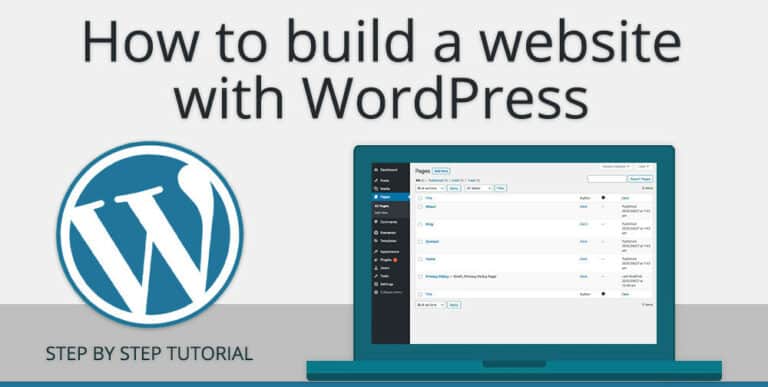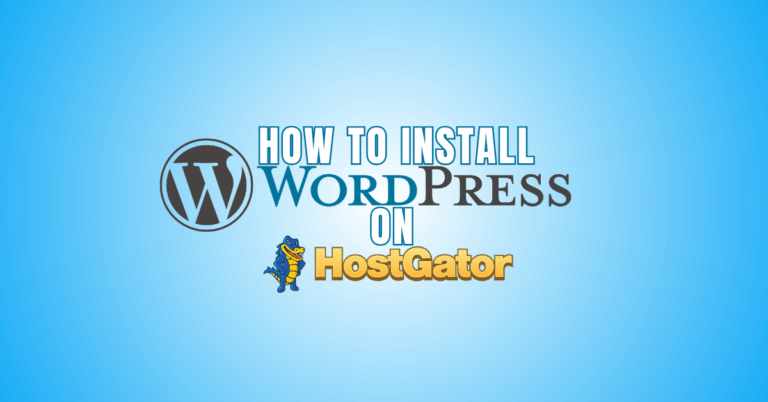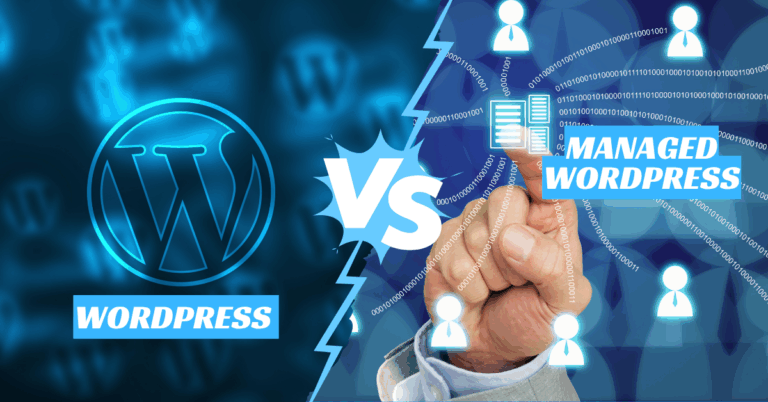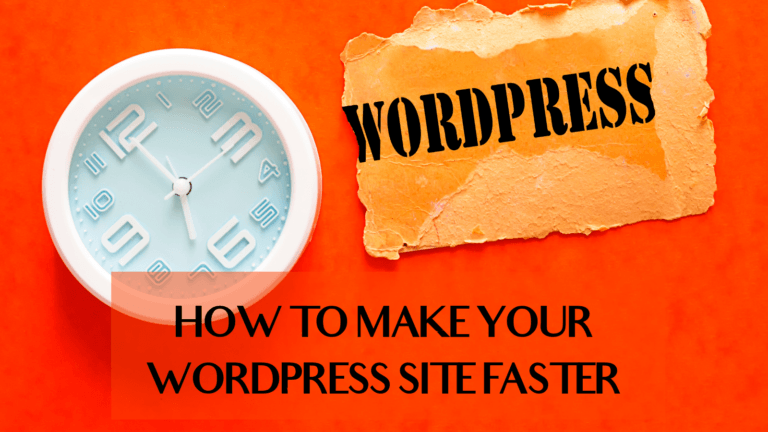How To Install A WordPress Theme
How To Install A WordPress Theme
Installing a WordPress theme is one of the easiest ways to transform the look and feel of your website — no coding skills required!
WordPress themes offer endless customization if you want a sleek business design, a creative portfolio, or a personal blog layout.
This guide will show you how to install a WordPress theme and build a site that perfectly matches your style and goals.
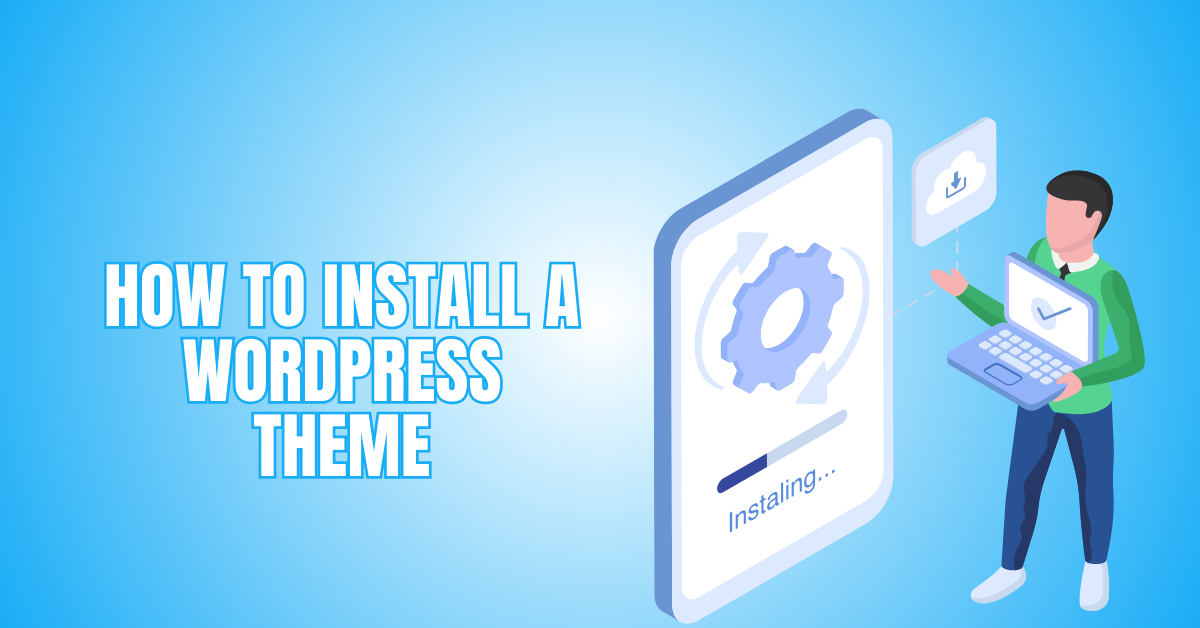
Introduction To WordPress Themes
WordPress themes are essential for designing and customizing websites, enabling users to change the look and feel of their site without altering its core functionality.
A blogging platform at first, WordPress has grown to become one of the most widely used content management systems (CMS) globally since its introduction in 2003 by Matt Mullenweg and Mike Little. WordPress powers over 40% of all websites today, making it a dominant force in the digital world.
Themes are pre-designed templates that define the visual presentation of a WordPress site. They offer flexibility, with thousands available for free or purchase, catering to various industries and design preferences.
A theme consists of several components, such as layouts, colours, fonts, and widgets, which can be easily customized through the WordPress admin panel or custom code.
One key feature of WordPress themes is responsiveness, ensuring that sites look great on all devices. Many themes also include advanced features like drag-and-drop page builders, custom post types, and SEO optimization tools.
From personal blogs to business websites and online storefronts, WordPress's expanding theme ecosystem accommodates a wide range of use cases, making it an effective tool for both novice and expert users.
Benefits Of WordPress Themes
WordPress themes are typically designed to help businesses or individuals showcase the advantages of their products, services, or features in an engaging and user-friendly way.
Here are some key benefits of using a WordPress theme for your website:
1. Easy To Customize
WordPress themes allow users to customize colours, fonts, layouts, and page structures easily through the WordPress customizer.
With built-in options, you don’t need coding knowledge. Many themes also allow drag-and-drop features for seamless content placement and design adjustments.
2. Responsive Design
Responsive WordPress themes adapt to various screen sizes automatically, making your website aesthetically pleasing and usable on all devices.
Better user engagement and search engine rankings depend on a mobile-friendly design because Google prioritizes mobile-first indexing.
3. SEO Optimization
WordPress themes are often built with SEO best practices in mind, featuring clean code, fast load times, and optimized metadata. Integrated SEO technologies facilitate site optimization, increase search engine presence, and draw in natural traffic.
4. Pre-Built Templates
Most WordPress themes include pre-made templates that let you quickly create pages with a polished appearance.
Design time is reduced by using these templates, which are made for various sectors and uses, including blogs, e-commerce, portfolios, and company websites.
5. Speed & Performance
Well-designed WordPress themes prioritize site speed by minimizing unnecessary elements, compressing images, and ensuring smooth performance.
A fast-loading site enhances user experience, reduces bounce rates, and positively impacts SEO rankings. Optimized themes contribute to overall site efficiency.
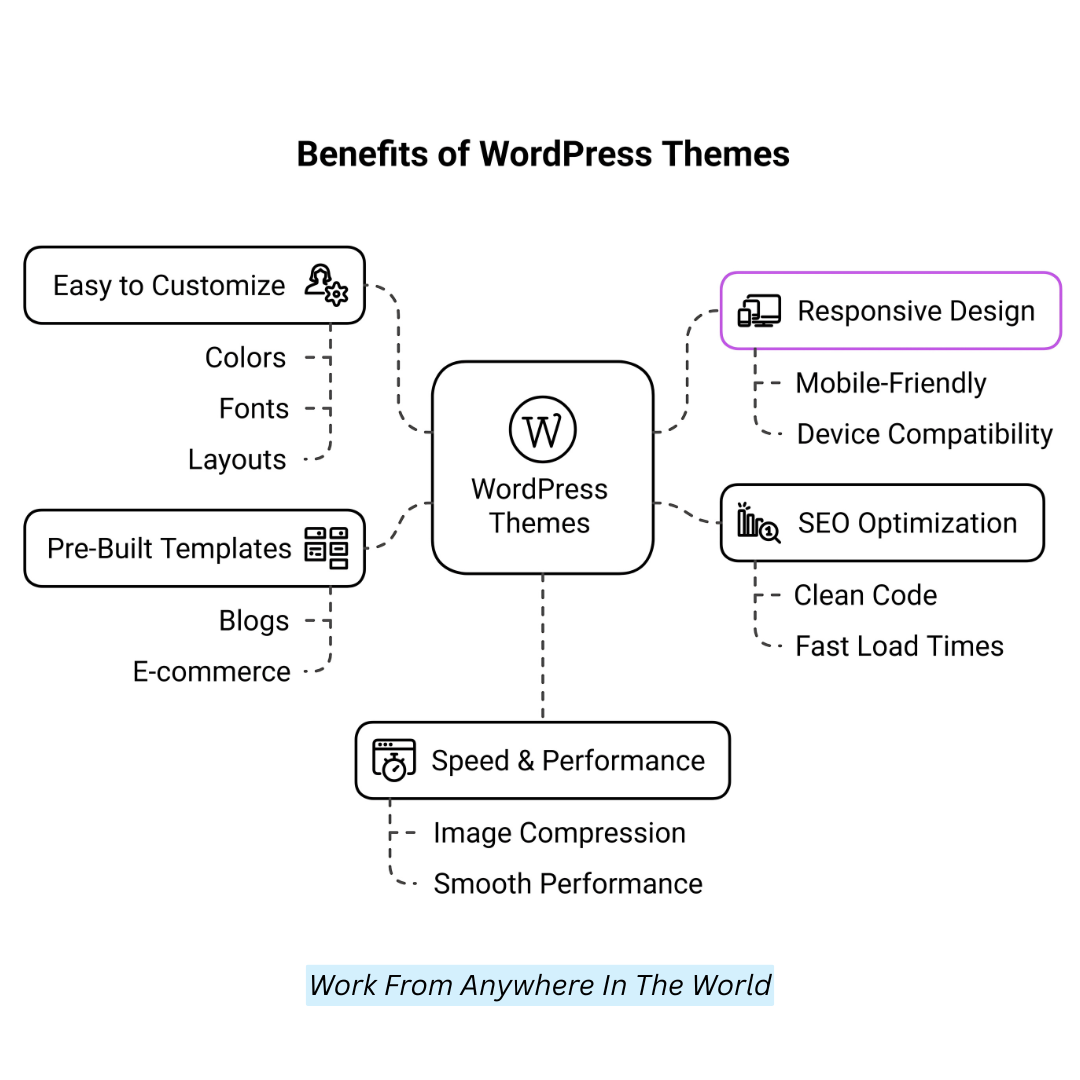
How To Install A WordPress Theme
Installing a theme directly from the WordPress directory is the easiest and most beginner-friendly method. It’s perfect for anyone using free themes and requires no technical knowledge or external downloads.
1. Log In To Your WordPress Admin Dashboard
To start, open your web browser and type in your website's admin login URL, usually formatted as yourdomain.com/wp-admin. You will then be prompted to enter your username and password on the login screen.
Once logged in, you’ll be redirected to your dashboard — the control panel for everything on your WordPress website. If you’ve just installed WordPress, your hosting provider likely provided your login credentials. You will return to this page often, so bookmark it for future reference.
2. Navigate To Appearance > Themes
You'll notice a menu with several options on the left side of your dashboard. Hover over or click on ‘Appearance,’ then select ‘Themes’ from the dropdown list. This section shows all currently installed themes on your website.
Want to Start Making Money Online?
Try My #1 Recommendation Program!
You’ll see the active theme displayed first, as well as any other themes you may have installed. This is the central location where all theme management functions occur—installation, activation, deletion, and previewing.
If this is your first time here, you’ll likely only see the default WordPress theme, like Twenty Twenty-Four.
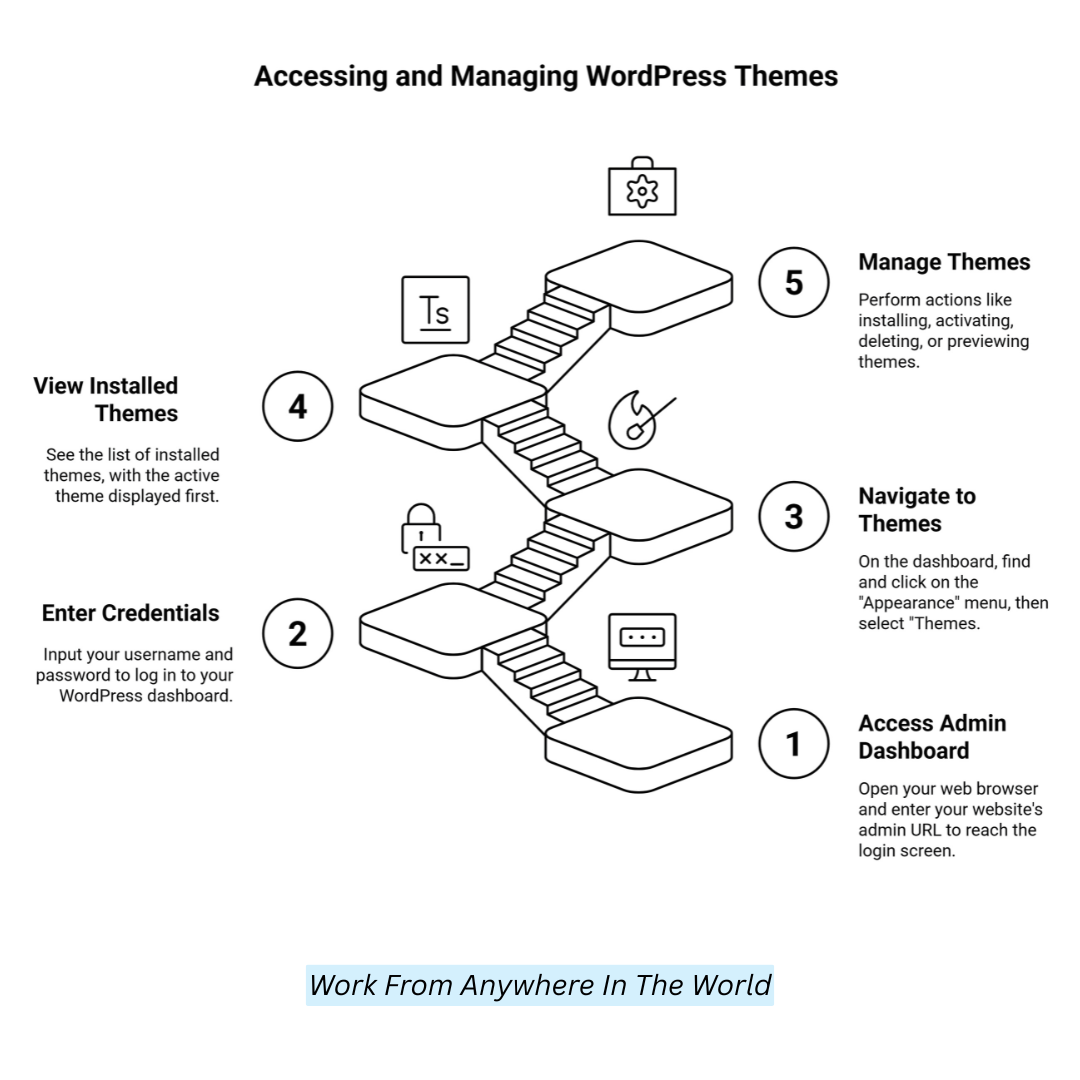
3. Click On ‘Add New’ To Access The Theme Directory
At the top of the Themes page, you'll notice a button labelled ‘Add New.’ Clicking this takes you directly to the WordPress Theme Directory. This directory is a curated collection of thousands of free themes tested and approved by the WordPress team.
These themes are safe to use, regularly updated, and meet WordPress coding standards. This integrated interface lets you install themes instantly, eliminating the need to download or upload files. It’s the most convenient way to explore your design options.
4. Browse Or Search For A Theme
Once inside the theme directory, you’ll see various tabs like Featured, Popular, Latest, and Favourites. Themes can be visually explored by scrolling through, or you can use the Search bar in the top-right corner to search a theme by name or niche, like ‘minimalist,’ ‘travel blog,’ or ‘portfolio.’
Want to Find Out How To Start Your Home-Based Business?
Try My #1 Recommendation Platform!
If you’re not sure what you’re looking for, click the Feature Filter option to search based on layout (like grid or one column), subject (eCommerce, blog), and features (custom logo, full-width template, etc.).
5. Preview The Theme Before Installing
Found a theme that looks promising? Click the ‘Preview’ button on the theme thumbnail. This opens a live preview window that shows you how the theme would look with your existing content. This is a great way to test the vibe and layout before committing to it.
Please note that the demo content displayed in the preview may vary slightly from your site, unless the theme supports importing demo content (more on this later). If you like the preview, proceed to the installation.
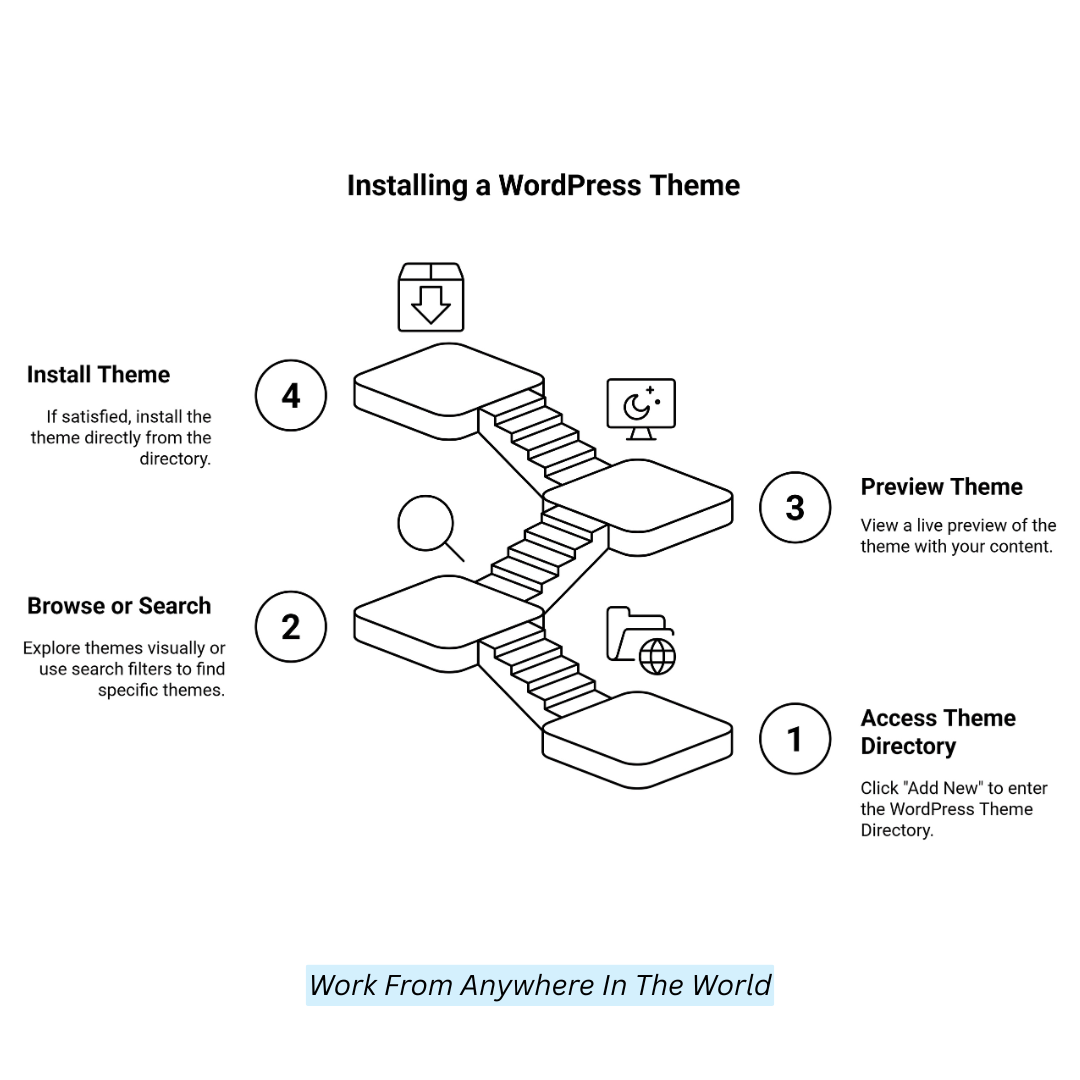
6. Select ‘Install’ To Incorporate The Theme Into Your Website
Once you’ve decided on a theme, click the ‘Install’ button on the thumbnail. WordPress will now begin the installation process.
This only takes a few seconds. Behind the scenes, WordPress downloads the theme files and places them in your theme folder.
You can install multiple themes, but only one can be active. Installing a new theme won’t delete your content, but it might affect its display.
7. Click ‘Activate’ To Apply The Theme
The ‘Activate’ button will appear after installation. To make the theme active on your website, click it. This step is crucial—installing a theme alone doesn’t change your site’s appearance; activating it does.
Once activated, WordPress will instantly apply the new layout and style settings to your site. Visit your homepage to view the changes in real-time.
If something doesn’t look right, you can always switch to your old theme or choose another one from your installed themes list.
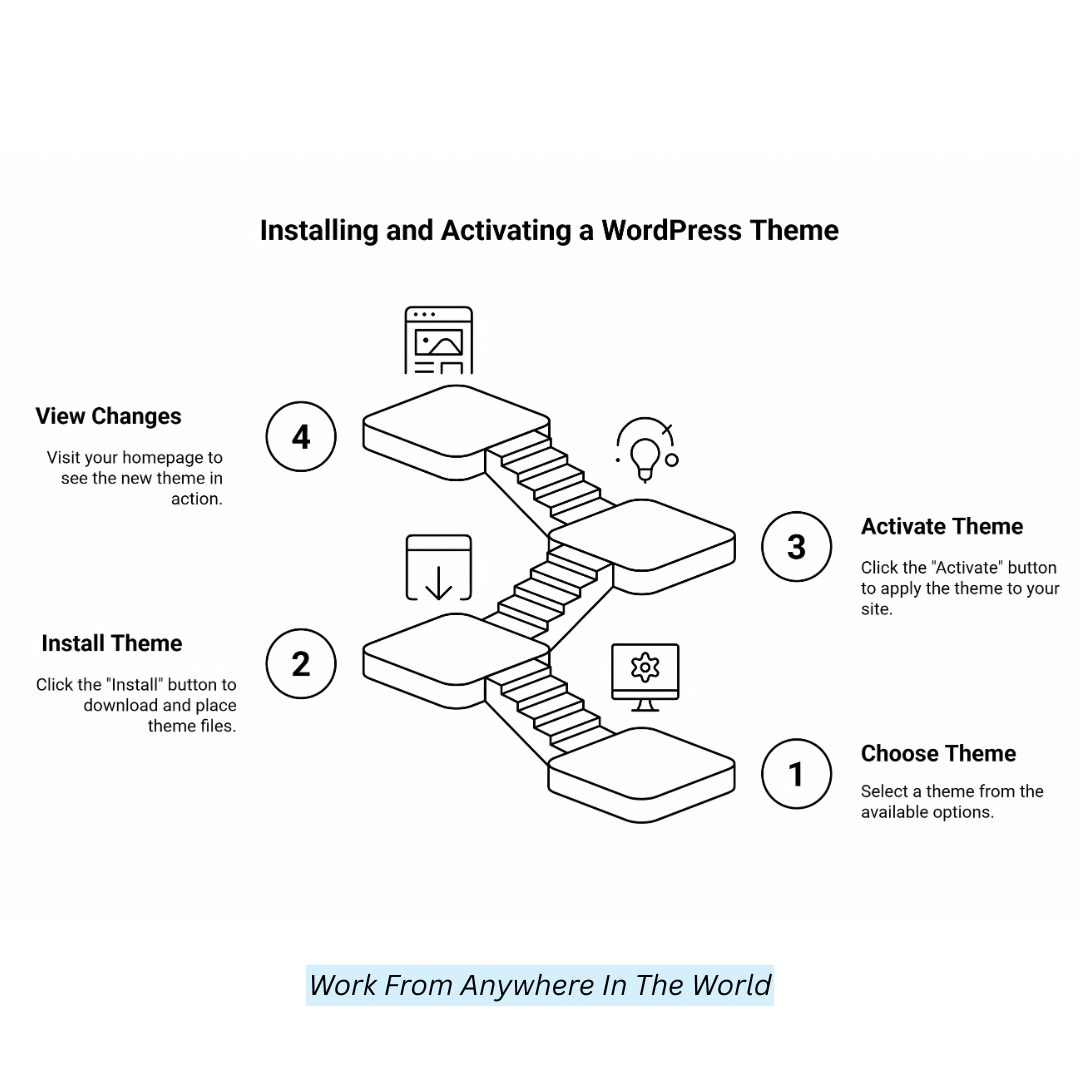
8. Success! Your New Theme Is Live
And just like that, you’ve successfully installed and activated a new WordPress theme from the official directory! You can customize it further using the Customizer under Appearance > Customize or the theme’s settings panel.
Modern themes include starter templates, demo content import, or integration with page builders like Elementor or Gutenberg.
Don’t be afraid to explore these options to get your website looking just right. Keep reading for tips on customizing and troubleshooting themes.
Troubleshooting Common Issues
Installing a WordPress theme is one of the most critical steps in customizing your website's look and feel. With practical troubleshooting tips, you’ll be equipped to handle these issues and get your WordPress theme up and running smoothly.
1. Theme Installation Failed
One of the common issues users encounter during theme installation is the process failing. This issue typically arises when the wrong file is uploaded or corrupted. To resolve this, ensure you're uploading the correct .zip file of the theme, not an extracted folder or other files.
Are You Tired Of Scams?
Want to Start Making Money Online?
If the .zip file is corrupted, download the theme from a reliable source again and try the installation again. It's also essential to check if your server's PHP settings support the theme’s requirements.
2. Missing Stylesheet Error
The ‘Missing Stylesheet’ error happens when WordPress fails to locate the theme's stylesheet, which is required to display the theme's design.
This error typically occurs when the entire theme package is uploaded, including unnecessary files such as documentation or licenses.
Extract the theme package on your computer to resolve this issue and upload only the theme's .zip file to WordPress. Ensure that the .zip file contains the style.css file, as it’s essential for the theme to function correctly.
3. White Screen Of Death (WSOD)
After switching to a new theme, you might encounter the White Screen of Death, a blank screen that can make your website inaccessible.
This often results from a theme conflict, faulty theme code, or server issue. To troubleshoot, deactivate the theme via FTP or switch to a default WordPress theme.
If the site loads, the issue lies with the new theme. Try updating the theme, increasing your PHP memory limit, turning off conflicting plugins, or restoring a backup to resolve the problem. Contact theme support if needed.
4. Theme Not Displaying Correctly
This issue often occurs due to missing demo content, required plugins, or improper customization settings. To fix it, first install and activate all recommended plugins the theme provides. Next, import the demo content if the theme offers a one-click import option.
Finally, review the theme’s documentation for specific setup steps or configuration settings to match the demo layout. These steps should help ensure your theme displays correctly and functions as intended.
5. Incompatible WordPress Or PHP Version
This issue occurs when the theme needs a newer WordPress or PHP version than the one your site currently uses. First, check the theme’s documentation for the minimum version requirements to resolve it.
Then, log in to your hosting control panel and update WordPress and/or PHP to the required versions. Always back up your site before updating to avoid data loss or compatibility issues. Keeping your software up to date ensures better performance and security.
6. Missing style.css Error During Installation
This error usually means you're uploading the wrong file—often a complete package with extras like documentation and licenses.
To fix it, first unzip the downloaded theme package on your computer. Locate the actual theme folder (it should contain files such as style.css and functions.php).
Want To Learn How To Create Your Own Website And Online Business?
Try My #1 Recommendation Training And Hosting Platform!
Zip only this folder, not the entire package. Then, go to your WordPress dashboard and upload this zipped theme folder. This ensures WordPress recognizes the correct structure and installs the theme correctly.
Post-Installation Steps
After installing a new WordPress theme, it’s tempting to dive straight into content creation, but a few quick steps can ensure your site looks polished and functions smoothly from the start. Below are the essential post-installation steps to help you get your theme up and running like a pro.
1. Use A Child Theme For Customizations
When you want to customize your WordPress theme, always use a child theme instead of directly editing the main theme files. A child theme allows you to make design and functionality changes without affecting the original theme.
This way, your customizations remain intact when the parent theme is updated. Using a style.css and functions.php file in a new theme folder, establish a child theme by referencing the parent theme. This practice ensures safer updates and easier maintenance over time.
2. Check Plugin Compatibility
Before choosing or activating a theme, ensure it supports major plugins like WooCommerce, Elementor, and Yoast SEO. Review the theme’s description, documentation, or FAQ section—these often list compatible plugins.
You can also consult user reviews or contact the developer directly. After installing the theme, activate your key plugins and test the core functionalities, including layout, navigation, and forms.
If any issues appear, use a staging site to troubleshoot safely. Ensuring plugin compatibility helps maintain smooth performance and avoids potential conflicts or broken features.
3. Regular Updates
Your theme and plugins must be updated to keep your website secure and functional. Outdated themes or plugins can introduce vulnerabilities that hackers may exploit, compromising your site.
New features and enhancements will be added to your website if it is compatible with the most recent version of WordPress and is regularly updated.
Set up notifications for updates or check for them regularly through your WordPress dashboard to stay current with the latest versions.
4. Responsive Design
Your theme needs to be flexible, allowing it to adapt fluidly to various screen sizes, given the growing number of people accessing the internet through mobile devices.
Regardless of the device, a desktop computer, tablet, or smartphone, a responsive design ensures consumers a satisfying experience.
Additionally, mobile-friendly websites tend to score higher in Google's search results; therefore, having an adaptable design is essential for SEO.
Always choose a theme that offers mobile optimization as a standard feature, or ensure that you add this functionality if necessary.
5. Follow SEO Best Practices
Selecting an SEO-friendly theme is crucial for better search engine visibility. Look for themes with clean, semantic code that helps search engines easily understand your content structure.
Avoid themes overloaded with unnecessary scripts or visual elements, as these can slow down your site. Features like fast loading times, mobile responsiveness, schema markup, and compatibility with SEO plugins (like Yoast or Rank Math) are key.
Because it forms a solid basis for your entire SEO strategy, optimizing your theme raises the possibility that it will appear higher in search results.
6. Backup Before Making Changes
Always back up your WordPress site before installing or updating a theme to avoid losing content or settings. You can back up manually via your hosting control panel (like cPanel) by exporting your database and site files. Alternatively, use a plugin like UpdraftPlus or BlogVault to automate the process.
These tools enable you to schedule backups, store them in cloud services (e.g., Google Drive, Dropbox), and restore your site with a single click if needed. A reliable backup ensures peace of mind and quick recovery in the event of an issue.
7. Test Across Browsers
Use Google Chrome, Safari, Firefox, and Microsoft Edge to test your WordPress theme in all major browsers to guarantee a consistent user experience. Each browser may render elements slightly differently, which can affect layout, fonts, or functionality.
Start by visiting your site in each browser and checking key pages, including the home, blog, contact, and shop (if applicable). Look for visual inconsistencies, broken features, or misaligned elements.
You can also use tools like BrowserStack or LambdaTest to simulate different browsers and devices. Cross-browser testing ensures your site appears professional and functions smoothly for all visitors.
Conclusion
Installing a WordPress theme is a straightforward process that can be done through various methods, including the WordPress theme directory, manual uploads, or via FTP.
You can easily enhance your website's appearance and user experience by following the correct procedures. Always back up your site, test the theme, and follow best practices for a smooth experience and optimal performance.
I trust you enjoyed this article about How To Install A WordPress Theme. Please stay tuned for more articles. Take care!
JeannetteZ
Want to Learn How to Build Your Own Home-Based Online Business And Start Making Money Online From Your Comfortable Couch?
Try Wealthy Affiliate!
Your Opinion Is Important To Me
Do you have thoughts, ideas, or questions? I would love to hear from you. Please share your questions, experiences, remarks, and suggestions about How To Install A WordPress Theme in the comments below. You can also email me at Jeannette@WorkFromAnywhereInTheWorld.com.
Disclosure
This post may contain affiliate links. I earn from qualifying purchases as an Amazon Associate and through other affiliate programs. Please read my full affiliate disclosure.
You may also enjoy the following articles:
Wealthy Affiliate Coupons For Premium Memberships
Wealthy Affiliate Review – Scam or Legit? The Truth Exposed
An Insider Wealthy Affiliate Review
Winning Small Business Event Ideas For Lasting Impact And Profit
Best Rank-Tracking Software To Optimize Your SEO Performance
Effective SEO Strategies For E-Commerce Sites To Boost Conversions




